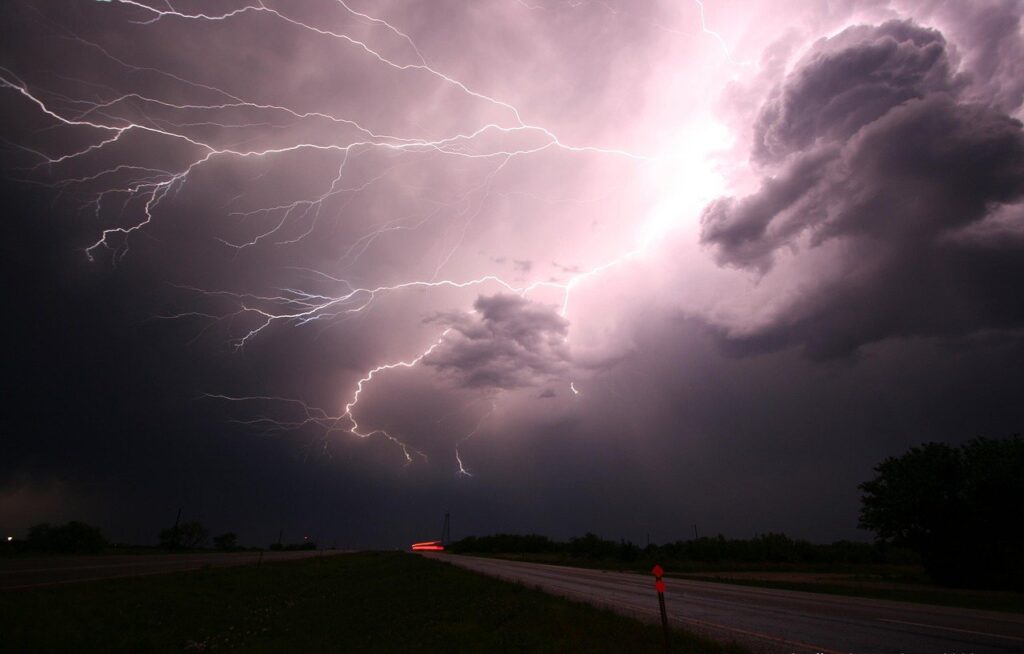As I was leafing through one of the magazines, I had fresh memories of the news of this year’s Nobel Prize in Physics which the Royal Swedish Academy of Sciences announced recently. It has been awarded “for groundbreaking contributions to our understanding of complex physical systems”. With complexity making waves in my mind, I began reading the scientific paper, published in 1967, which laid the foundation of studying one of the complex systems in nature, Climate.
I missed a call, strictly technically, from my best friend as the network delay (most probably) caused that call to hit my mobile phone exactly 5 mins later with a momentarily ring, and then it got disconnected. I, though being indulged in my sporadic thoughts, would have loved to receive that call, but I couldn’t. Maybe the radio signal from her mobile took time to beam out from the antenna. Maybe it did and traveling at the speed of light, it reached the nearest cellphone mast. Perhaps it couldn’t be received at the base station in time or perhaps it did, but couldn’t reach the destination station early enough. Whatever may be the reason, these inter-related components of a network make it a slighter complex system.
The presence of a large number of underlying inter-related variables and parameters make a complex system further unpredictable, and Complexity, as a concept, arises from incomplete information, in connection with elementary regularities. However, theories and experimental data over the years show us that Complexity, rather, is ingrained in the fundamental laws of physics.
The simultaneous existence of order and chaos within a system makes it arduous for any sort of prediction or any future evolution of the system based on the existing data. A typical example is that of weather prediction where it is a challenging task to come up with an accurate forecast beyond a certain number of days.

Syukuro Manabe (Senior Meteorologist at Princeton University, USA), Klaus Hasselmann (Professor at Max Planck Institute for Meteorology, Hamburg, Germany), and Giorgio Parisi (Professor at Sapienza University of Rome, Italy) are the recipient of the 2021 Nobel Prize in Physics, the common thread relating to each of them being the study of disorder and fluctuations in complex systems.
These systems have been under study for quite a long time; the presence of a greater number of components or a chance factor makes it difficult for them to be described mathematically. There can also be a presence of chaos, like the weather, wherein smaller deviations in the values correspond to larger variations at a later point in time. This is also known by the term “Butterfly Effect” whose central idea is – flapping a butterfly’s wing in one part of the world may cause a storm in the other part of the world.
One half of the prize has been jointly awarded to Syukuro Manabe and Klaus Hasselmann “for the physical modeling of Earth’s climate, quantifying variability and reliably predicting global warming”, while the other half has been given to Giorgio Parisi “for the discovery of the interplay of disorder and fluctuations in physical systems from atomic to planetary scales”. The award money is worth 10 million Swedish krona or 1.1 million dollars.
Syukuro Manabe is a pioneer in the field of climate study and he is the first person to find out a relationship between carbon dioxide and temperature, and to develop a physical model of our planet’s climate. He is the first researcher to explore the interaction between radiation balance (a part of the incoming solar radiation is absorbed by the atmosphere while the other part goes out in space) and the vertical transport of air masses due to convection. He illustrated that with the increased level of carbon dioxide in the atmosphere, the temperature of the lower atmosphere including the surface increases while the upper atmosphere gets colder.
This, in turn, confirmed that the temperature variation is due to carbon dioxide concentration and not due to increased solar radiation. If latter was the case, the entire atmosphere’s temperature would have increased. According to his study, when the concentration of carbon dioxide in the atmosphere became half, the surface temperature fell by 2.28°C whereas when it doubled, the temperature increased by 2.36°C.

Klaus Hasselmann, ten years after Syukuro’s research, developed a model that could successfully establish a link between climate and weather. Our planet has varying weather, primarily because of the uneven distribution of solar radiation, its shape being an oblate spheroid, and its axis being tilted which causes seasons. It is impossible to precisely calculate pressure, humidity, temperature and wind conditions for every point in the atmosphere, and thus making any reliable prediction about the weather for the long term is a challenge.
Klauss exhibited the chaotic weather changes in terms of rapidly changing noise, and showed how this noise affects climate. He created a stochastic model of the climate, thus bringing chance into the model and not rendering it completely deterministic. He is also credited with developing methods for identifying human impact on our climate. He carefully observed that the models contain sufficient information about properties related to noise. Any changes in the levels of greenhouse gases, solar radiation, or other particulates leave unique signals or fingerprints, which can be filtered out for further studies. This method is extremely helpful in finding out the impact human have on the climate system through independent observations.

Syukuro Manabe and Klaus Hasselmann’s contribution to climate studies and analysis, if not perhaps the most, is certainly one of the extraordinary benefits for humankind, for we now have a strong foundation for the knowledge about our planet’s climate. The climate models are not ambiguous anymore and we have precise answers to some of the pressing questions related to climate change.


You need to take part in a contest for one of the finest websites online.
I’m going to recommend this site!